calsfoundation@cals.org
Battle of Prairie Grove
| Location: | Washington County |
| Campaign: | Prairie Grove Campaign |
| Date: | December 7, 1862 |
| Principal Commanders: | Brigadier General James G. Blunt (US); Major General Thomas C. Hindman (CS) |
| Forces Engaged: | Union Army of the Frontier (US); Confederate Army of the Trans-Mississippi (CS) |
| Estimated Casualties: | 2,700 killed, wounded, or missing (both armies) |
| Result: | Union victory |
The Battle of Prairie Grove was the last time two armies of almost equal strength faced each other for control of northwest Arkansas. When the Confederate Army of the Trans-Mississippi withdrew from the bloody ground on December 7, 1862, the Union forces claimed a strategic victory. It seemed clear that Missouri and northwest Arkansas would remain under Federal protection.
Brigadier General James G. Blunt’s Union command remained in the Cane Hill (Washington County) area after the engagement there on November 28. This encouraged Major General Thomas C. Hindman to attack the Federal troops with his Confederate Army of the Trans-Mississippi at Fort Smith (Sebastian County) thirty miles away. The Southern army crossed the Arkansas River on December 3 and marched north into the rugged Boston Mountains. Learning of the Confederate threat, Blunt requested assistance from the two divisions of the Union Army of the Frontier under the command of Brigadier General Francis J. Herron camped near Springfield, Missouri, about 120 miles away. Immediately, Herron ordered a forced march in hopes of joining Blunt’s command at Cane Hill before the Confederates could attack.
On December 6, Confederate cavalry drove in Blunt’s pickets on Reed’s Mountain while the rest of Hindman’s Southern forces arrived and camped near the home of John Morrow on Cove Creek Road. During the night, the Southern commanders learned that Herron’s men in blue had arrived at Fayetteville (Washington County). They decided to march north past Blunt and intercept and attack the Union reinforcements somewhere between Fayetteville and Cane Hill. It would be at Prairie Grove (Washington County).
The battle began at dawn on December 7, with the defeat of Union cavalry by Confederate mounted soldiers a mile south of the Prairie Grove church. Federal troops retreated toward Fayetteville with the Southern cavalry in pursuit. The panicked Union soldiers stopped running when Herron shot a soldier from his horse. The Confederate cavalry skirmished with Herron’s main army before falling back to the top of the Prairie Grove ridge, where the Confederate artillery and infantry were already in line of battle in the woods.
After crossing the Illinois River under artillery fire, Herron positioned his artillery and exchanged fire with the Confederate cannon. The superior range and number of Union cannon soon silenced the Southern guns, allowing the Union infantry to prepare to attack the ridge. Before the infantry advanced, the Union artillery pounded the Southern position on the ridge for about two hours.
The Twentieth Wisconsin and Nineteenth Iowa Infantry regiments crossed the open corn and wheat fields in the valley before surging forward up the slope, capturing the Confederate cannon of Captain William Blocher’s Arkansas Battery near the home of Archibald Borden. The Union soldiers continued their advance until suddenly the woods erupted with cannon and small-arms fire. The Confederates surrounded the Federal troops on three sides and quickly forced them to retreat to the Union cannon in the valley. A Southern counterattack went down the slope into the open valley, where it was met with case shot composed of small lead balls inside exploding projectiles. Herron’s artillery also used canister shot, consisting of tin cylinders filled with iron balls packed in sawdust which, when fired, turned a cannon into a giant shotgun blast, leaving gaping holes in the Confederate ranks and forcing a retreat to the cover of the woods on the ridge.
Seeing Confederate movement on his flank, Herron decided to attack again. The Thirty-seventh Illinois and Twenty-sixth Indiana Infantry regiments went up the hill into the Borden apple orchard. Lieutenant Colonel John Charles Black of the Thirty-seventh Illinois led the way with his right arm in a sling because of a wound he had sustained at Pea Ridge (Benton County) nine months earlier. Outnumbered, the Federal soldiers fell back to a fence line in the valley, where they stopped another Confederate counterattack using Colt revolving rifles carried by the men of Companies A and K of the Thirty-seventh Illinois. Black sustained a serious wound to his left arm but remained with his command until it was out of danger. Black received the only Medal of Honor awarded for this battle.
With only two fresh infantry regiments left, Herron’s command was in peril even as Confederate troops began massing to attack the Twentieth Iowa Infantry, which served as the Federal right flank. Before the attack, two cannon shots rang out from the northwest at about 2:30 p.m., signaling the arrival of Blunt’s command; he quickly deployed and attacked the Confederate left flank. Blunt’s division was at Cane Hill the morning of December 7 expecting to be attacked by the Confederates. Hindman left Colonel James Monroe’s Arkansas cavalry on Reed’s Mountain to skirmish with Blunt’s Federal troops while the rest of the Confederate army marched past the Union position. The ruse worked, as Blunt’s command remained in a defensive position at Cane Hill until it heard the roar of battle at Prairie Grove. Marching to the battlefield, the Union soldiers under Blunt arrived in time to save Herron’s divisions.
The Confederates responded to the Union advance on their left flank by skirmishing in the woods with the Federal troops until Blunt gave the command to fall back to his cannon line in the valley. Believing this was an opportunity to win the day, Brigadier General Mosby M. Parsons, in command of the Confederate Missouri Infantry brigade, launched an attack across the William Morton hayfield at about 4:00 p.m. As the Southern soldiers advanced, a devastating fire from all forty-four cannon in the Union army tore into the Confederate ranks, which fell back to the cover of the wooded ridge as darkness fell.
Nightfall ended the savage fighting, but neither side gained an advantage. The opponents called for a truce to care for the wounded and gather the dead. During the night, the Confederates wrapped blankets around the wheels of their cannon to muffle the sound and quietly withdrew from the ridge because of a lack of ammunition and food. Federal troops slept on the battlefield with few tents or blankets and without campfires even though temperatures were near freezing.
Hindman’s command had about 204 men killed, 872 wounded, and 407 missing with several of the missing being deserters. The Federal Army of the Frontier had 175 killed, 808 wounded, and 250 missing. The Confederate Army of the Trans-Mississippi consisted of about 12,000 troops from Arkansas, Missouri, Texas, and the Cherokee and Creek nations, with about twenty-two cannon. The Union Army of the Frontier had about 10,000 soldiers from Arkansas, Missouri, the Cherokee and Creek nations, Illinois, Indiana, Iowa, Kansas, and Wisconsin, with about forty-four cannon.
The battle was a tactical draw, with the casualties about the same in each army. But the Southern retreat during the night gave the Union a strategic victory, as a full-scale Confederate army would never return to northwest Arkansas, and Missouri remained firmly under Union control. This savage battle was probably the bloodiest day in Arkansas history.
For additional information:
Banasik, Michael E. Embattled Arkansas: The Prairie Grove Campaign of 1862. Wilmington, NC: Broadfoot Publishing Company, 1996.
Baxter, William. Pea Ridge and Prairie Grove: Scenes and Incidents of the War in Arkansas. Fayetteville: University of Arkansas Press, 2000.
Christ, Mark K., ed. Rugged and Sublime: The Civil War in Arkansas. Fayetteville: University of Arkansas Press, 1994.
DeBlack, Thomas A. With Fire and Sword: Arkansas, 1861–1874. Fayetteville: University of Arkansas Press, 2003.
Hess, Earl, William Shea, William Piston, and Richard Hatcher. Wilson’s Creek, Pea Ridge, and Prairie Grove: A Battlefield Guide, with a Section on Wire Road. Lincoln: University of Nebraska Press, 2006.
Montgomery, Don, ed. The Battle of Prairie Grove. Prairie Grove, AR: Prairie Grove Battlefield Historic State Park, 1996.
Sallee, Scott E. “The Battle of Prairie Grove: War in the Ozarks, April ’62–January ’63.” Blue & Gray Magazine 21 (Fall 2004): 6–23, 45–50.
Shea, William L. Fields of Blood: The Prairie Grove Campaign. Chapel Hill: University of North Carolina Press, 2009.
———. War in the West: Pea Ridge and Prairie Grove. Abilene, TX: McWhiney Foundation Press, 2001.
Don Montgomery
Prairie Grove Battlefield Historic State Park
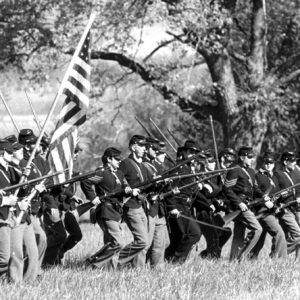 Battle of Prairie Grove
Battle of Prairie Grove 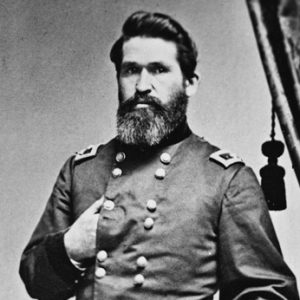 James Blunt
James Blunt 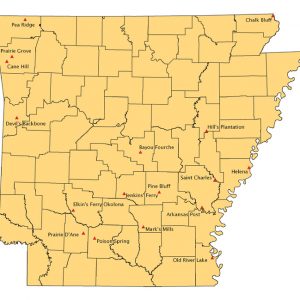 Civil War Events Map
Civil War Events Map 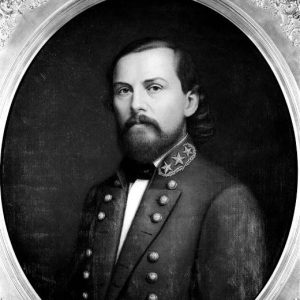 Thomas Hindman
Thomas Hindman 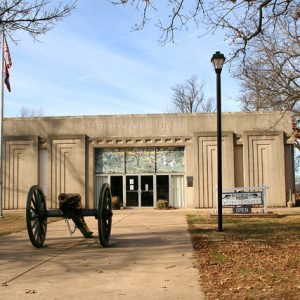 Prairie Grove Battlefield State Park
Prairie Grove Battlefield State Park 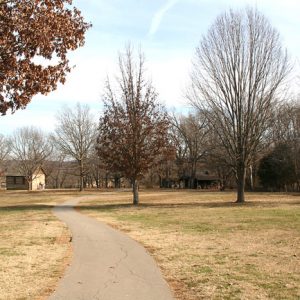 Prairie Grove Battlefield State Park
Prairie Grove Battlefield State Park 



Comments
No comments on this entry yet.